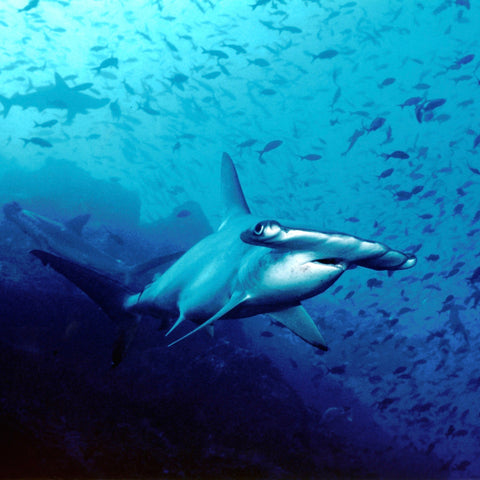The Sphyrnidae family, commonly known as hammerhead sharks, is one of the most fascinating and enigmatic groups of marine creatures. Renowned for their distinctive hammer-shaped heads, these sharks are not only striking in appearance but also masters of navigation and migration. In this blog, we delve into the remarkable world of Sphyrnidae and explore their incredible abilities to navigate vast oceanic landscapes.
Sphyrnidae: Anatomy of the Hammerhead:
The unique morphology of the hammerhead shark sets it apart from other marine species. The flattened, T-shaped head, known as the cephalofoil, houses a remarkable array of sensory organs. These include electroreceptors called ampullae of Lorenzini, which enable the shark to detect the electrical signals emitted by prey and navigate through the Earth's magnetic field.
Enhanced Sensory Perception:
The hammer-shaped head of Sphyrnidae provides several advantages in terms of sensory perception. With their widely spaced eyes, hammerhead sharks have a panoramic field of vision, allowing them to scan their surroundings for potential prey more effectively. This enhanced visual acuity, combined with their acute sense of smell and electroreception, makes them formidable hunters in the vast expanse of the ocean.
Long-Distance Migration:
Sphyrnidae are renowned for their impressive migratory patterns, traversing thousands of miles across the ocean throughout their lifetime. Studies have revealed that hammerhead sharks undertake long-distance migrations for various reasons, including foraging, reproduction, and environmental factors such as temperature and prey availability. These migrations play a crucial role in maintaining healthy populations and genetic diversity among hammerhead species.
Navigational Strategies:
The navigational prowess of hammerhead sharks, Sphyrnidae family, is truly remarkable. Research suggests that they utilize a combination of magnetic field detection, celestial cues, and environmental gradients to navigate across vast oceanic expanses with precision. By incorporating these sensory inputs, Sphyrnidae are able to navigate to specific locations for feeding, breeding, and migration, demonstrating their extraordinary navigational abilities.
The Sphyrnidae family, or hammerhead sharks, exemplifies the marvels of evolution and adaptation in the marine realm. From their distinctive anatomy to their unparalleled sensory perception and navigational capabilities, these majestic creatures continue to captivate scientists and enthusiasts alike. As we continue to unravel the mysteries of the ocean, the enigmatic world of Sphyrnidae serves as a testament to the boundless wonders that await exploration beneath the waves.






